
 |
|---|
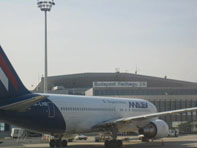 |
Welcome to Budapest! Our first visit to eastern Europe. A very beautiful and stately city. |
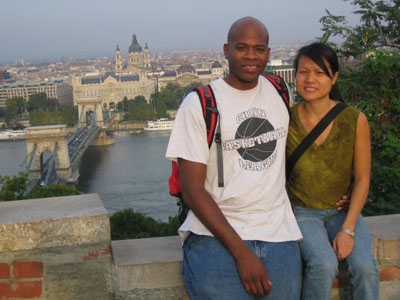 |
|
|---|---|---|---|
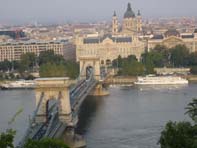 |
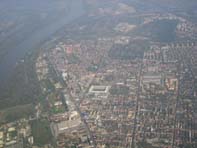 |
||
Budapest is actually three cities in one along the DUNA (Danube River); Buda, Pest, and Óbuda. Buda is on the west side of the river, and it’s most prominent feature is the hill upon which Hungarian kings built their palaces and defended their lands. These pictures are taken from VÁRHEGY (Castle Hill) in Buda. Pest is on the other side of the river, and is bustling with all the shops, nightclubs, and excitement; and Óbuda is the oldest, but the plethora of high rises and factories do not reflect this. |
|||
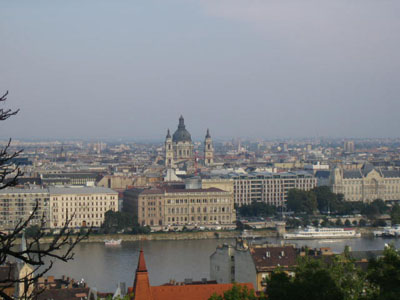 |
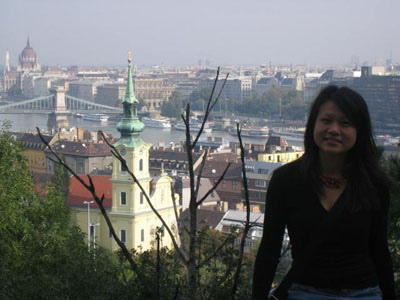 |
||
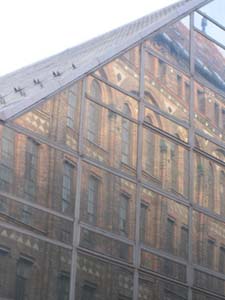 |
One of the first things we noticed about this city (or two cities) are the numerous stately buildings, large buildings along the boulevard. Embellishing many of them are also quite beautiful reliefs. To the left is Moe being creative with photography. Notice the reflection of the old building upon the glass of the new. |
||
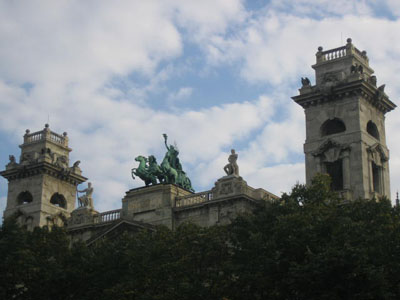 |
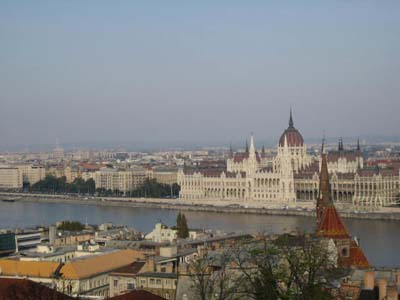 |
||
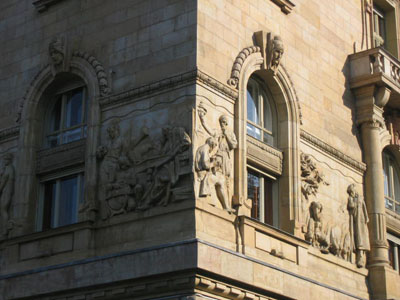 |
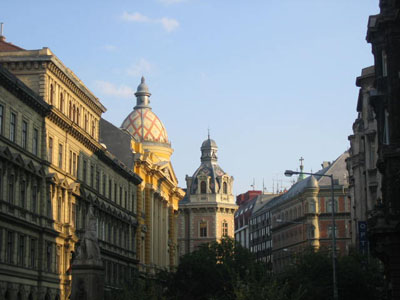 |
||
It's not until you get a bird's eye view (like atop St. Stephan's dome) do you notice the courtyards hidden within the buildings. |
And then peaking through a pair of heavy doors offers a glimpse of a courtyard. Quite peaceful looking, huh? |
||
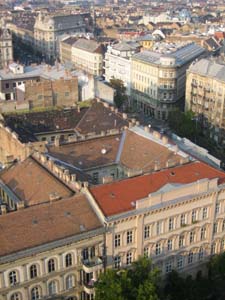 |
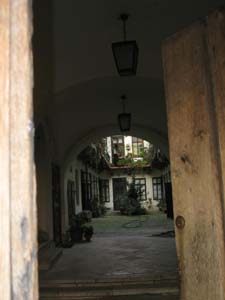 |
||
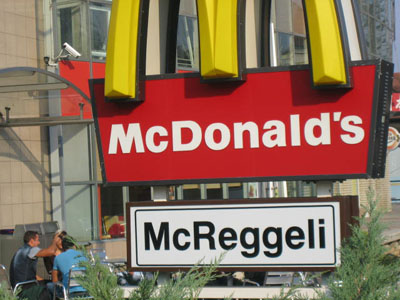 |
|||
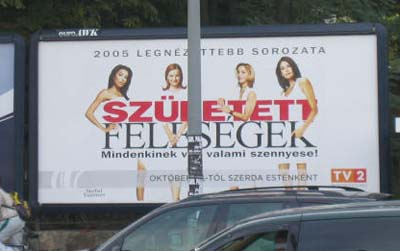 |
|||
| And amidst all these beautiful & stately buildings are some more familiar features. Yes, that is a billboard for "Desperate Housewives." Below is one of many Chinese restaurants. Aside from the 1.5 billion Chinese in China, there are also millions residing everywhere else. It's only a matter of time before we take over the world by sheer numbers alone. | |||
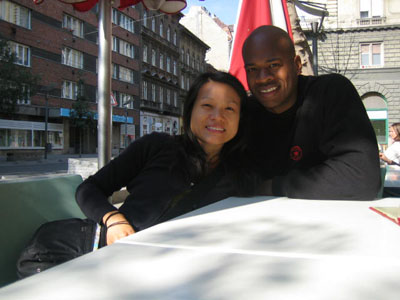 |
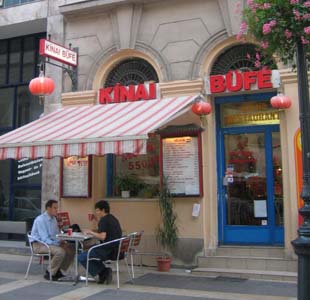 |
||
SZENT ISTVÁN-BAZILIKA (St. Stephen’s Basilica, in central Pest). This basilica, dedicated to Hungary’s patron saint and very much revered King Stephen, had the most ornate gold embellishments I had yet to see in a church of any denomination. All the light fixtures were gold, the trims were gold, the walls had gold paint, and the list went on. Natural light shining through the stained glass windows and open doors made the whole place glisten with glory. We wandered up to the balcony that ringed around the dome and got a wonderful panoramic birds’ eye view of the city. |
|||
 |
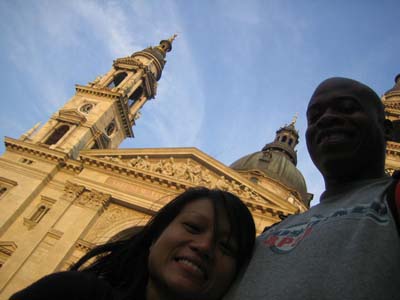 |
||
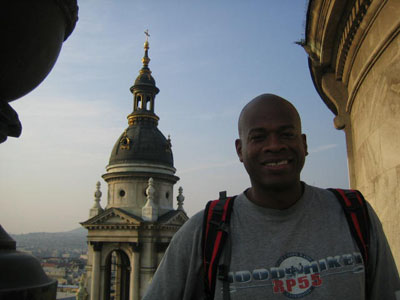 |
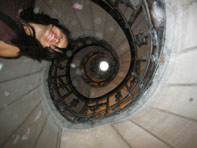 |
Spiral staircase to the panoramic view from the dome. | |
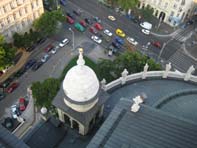 |
|||
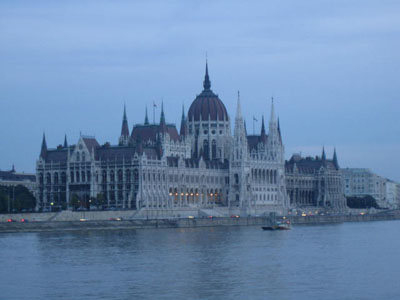 |
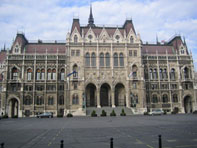 |
ORSZÁGHÁZ (Parliament building) for a tour of the Hungarian government headquarters. This is the Parliament building. From the river at dusk, the entrance for tours, & inside. | |
| Below is the grand staircase. Taking five years to build starting on the nation's 1000th birthdate, only Hungarian resources were used to build Parliament, except for those pink columns at the top of the stairs. They were gifts from the U.S. | 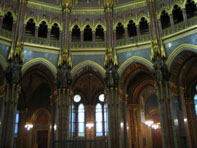 |
||
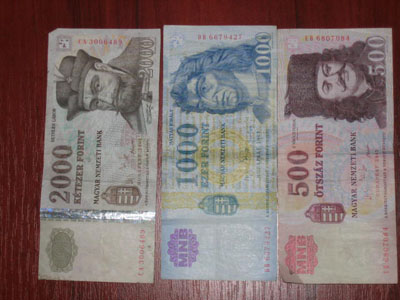 |
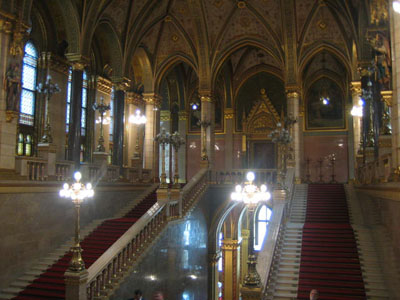 |
||
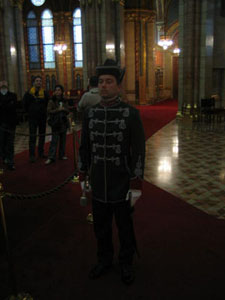 |
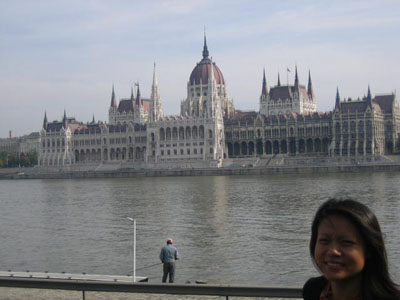 |
||
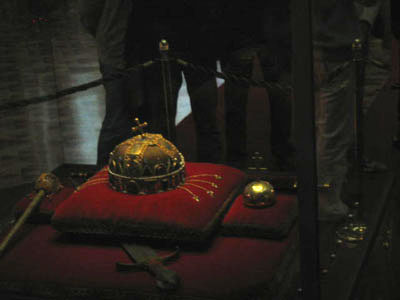 |
The crown jewels (crown, sceptor, & orb) are under protection around the clock. Below left is the chamber where members of parliament meet and make decisions. Below right is a cigar holder. Smoking is not allowed in the chamber, but permitted in the hallway between sessions. Each place holder has a number so MPs know which is theirs when they return. |
||
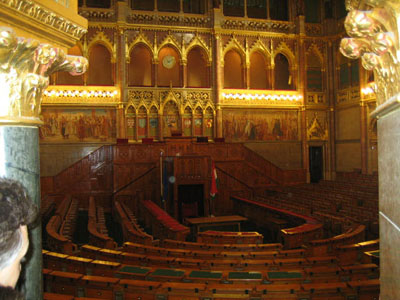 |
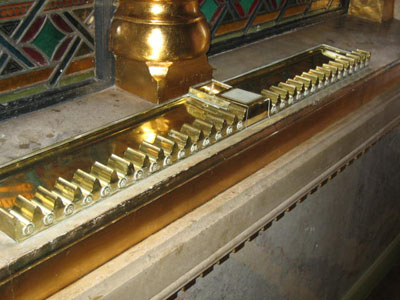 |
||
| Spooky statues, huh? | |||
|
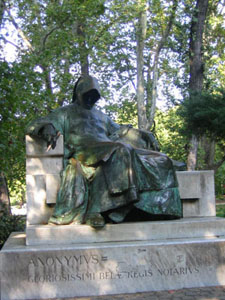 |
||
My favourite feature was the HALÁSZBÁSTYA (Fishermen’s Bastion); the “undulating white ramparts of cloisters and stairways” create a perfectly framed view of the Duna, Parliament, and Pest. It is also situated right next to MÁTYÁS TEMPLOM (Matthias Church), a neo-Gothic church characterized by beautifully asymmetrical diamond-patterned roofs and toothy spires indicative of the Gothic architecture. This is touted as the most beautiful Catholic church in Hungary, and they are quite right. Unfortunately dignitaries were attending a service when we got there so we were not allowed in. |
|||
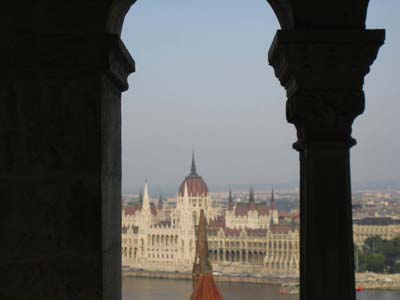 |
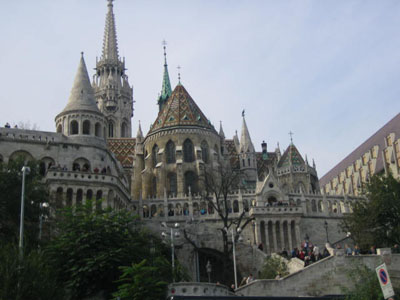 |
||
From this scenic spot one is surrounded by many beautiful sites. We took this photos from the Fishermen's Bastion. Peering between the columns is Parliament on the other side of the river. Behind the Bastion is St. Matthias Church. Check out the gorgeous tile work on this church. |
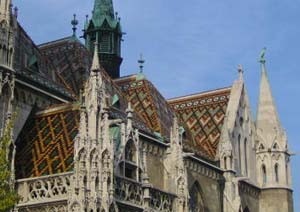 |
||
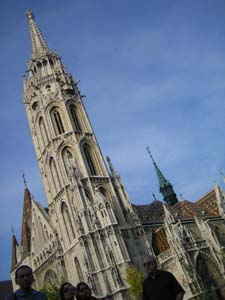 |
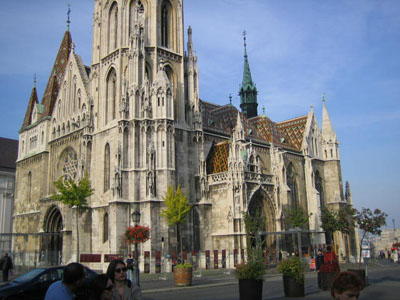 |
||
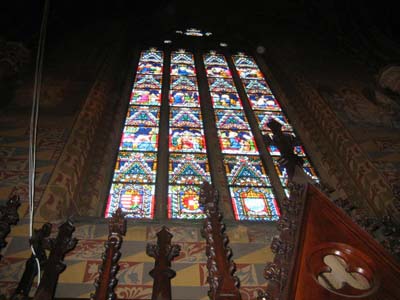 |
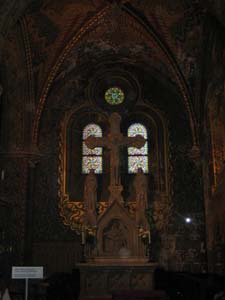 |
||
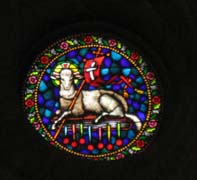 |
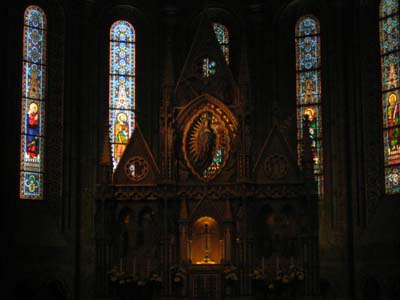 |
||
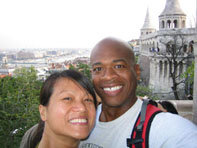 |
|||
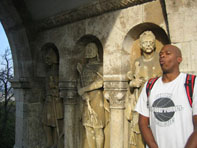 |
 |
||
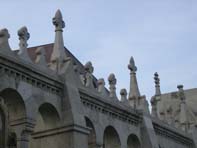 |
|||
On our way towards the BUDAVÁRI PALOTA (Buda Palace) at the south end of the hill, we stopped to take a picture only to be approached by a scrappy Hungarian man advertising his services as a personal guide to see Budapest. For 5000 ft (I think per person) he would tour us through the city, sharing stories of its history, character, and charm. Unfortunately, we were anxious to get to the bath house before it closed, and rushed off soon after his sales pitch. |
Budapest has many bath houses still in use; some for men or women only, some open only during the summer, and some even have pools outdoor with water so warm that one could sit in the thermal bath in the middle of winter with snow all around. We went to GELLÉRT GYÓGYFÜRDO (Gellert Bath House), reputed as the most beautiful bath house in Budapest; and it had an outdoor pool open. |
||
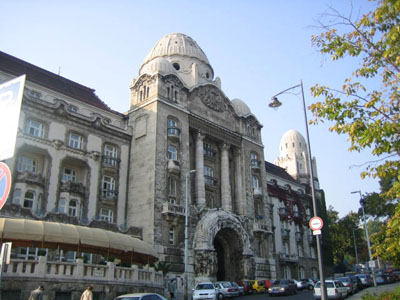 |
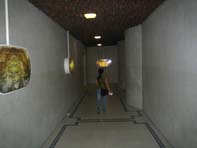 |
We were looking around for the men & women separations when we were greeted by three locker room attendants who told us (in Magyar) to pay for our lockers. This turned out to be a private closet for changing and storing ones’ belongings. | |
| Fred and I discovered that the warm thermal water loosened up tight muscles wonderfully and so took to stretching our achey legs and joints for the hour. Warmed to the core, we headed back out into the chilly autumn evening revitalized and loosened. | 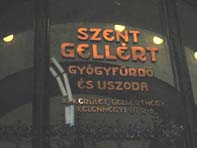 |
||
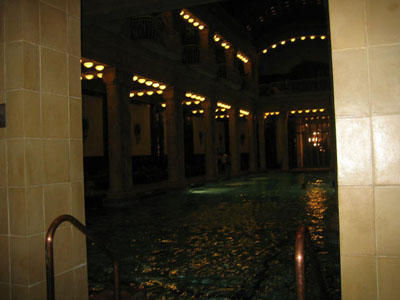 |
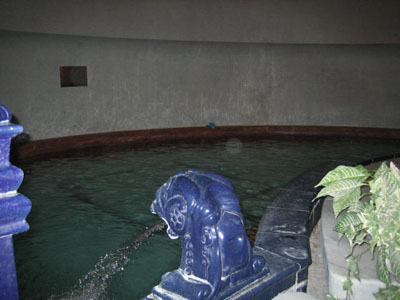 |
||
| Right across from this bath house is the cave church. Yes this is a church built into the mountain. Unfortunately it was closed when we visited. | |||
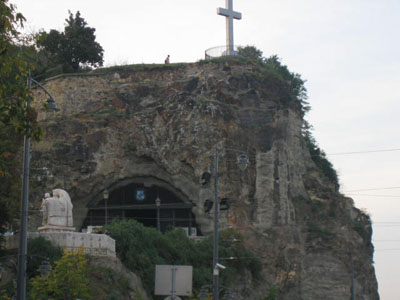 |
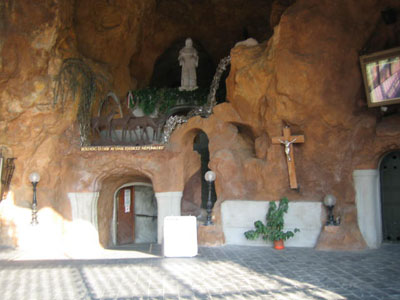 |
||
After finally seeing the inside of St . Matthias Church, we trekked out to Szentendre. It's only a short journey by train from Budapest. But of course, the train station from where we were to catch our train was closed for weekend maintenance. |
SZENTENDRE |
||
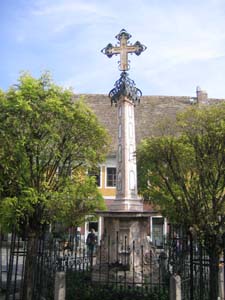 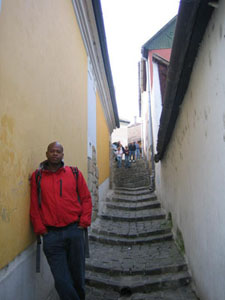 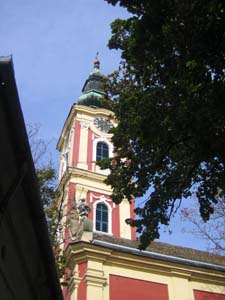 |
|||
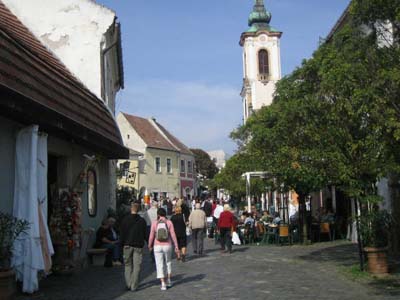 |
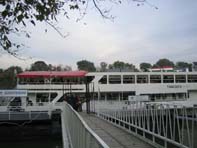 |
Our journey back to Budapest was much lovelier as we chose to take the ferry down the Danube. It took over an hour, but floating down the river as the sun was setting was quite nice. | |
| There's the village from the river. And then of course, an island in the middle of the river. There are cottages on this island, and docks for boats so people can get on and off the island. | 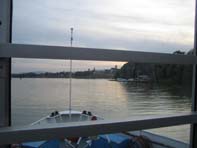 |
||
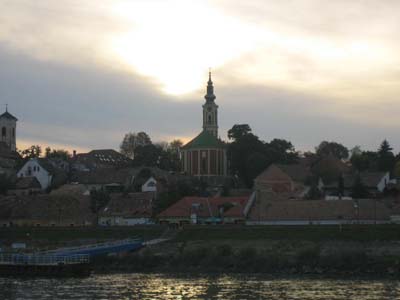 |
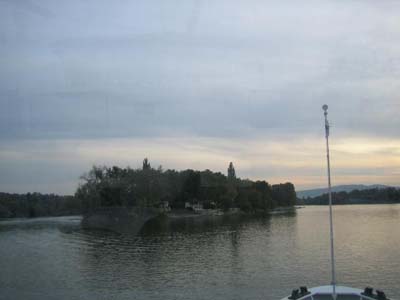 |
||
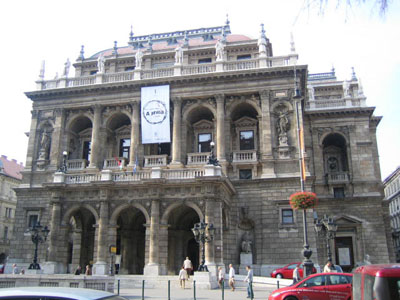 |
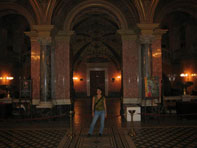 |
But then, we were also in a hurry. We got tickets to our first opera in the State Opera House that evening, MAGYAR ÁLLAMI OPERAHÁZ; 800 ft (Forints) each for balcony seats to the Saturday evening show. | |
Still in our touristing clothes, we stood out like sore thumbs among the ball gowns and tuxedos. The usher turned his nose on us as we walked in the front door. One look at our tickets, and we were instructed to use the back entrance. Climbing many flights of stairs, we get to the nose bleed section where we fit in perfectly with all the other tourists. Isn't the inside beautiful? |
|||
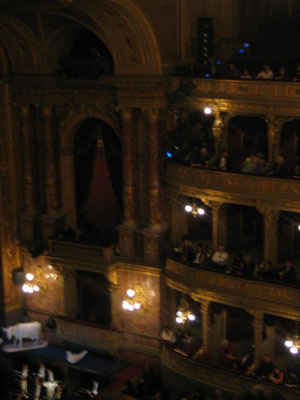 |
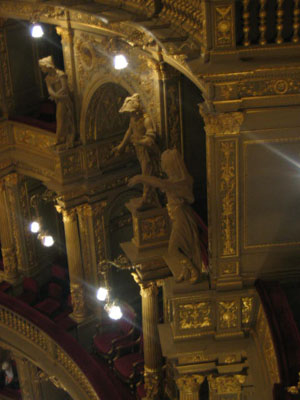 |
||
| The famous 2 tons chandelier. | 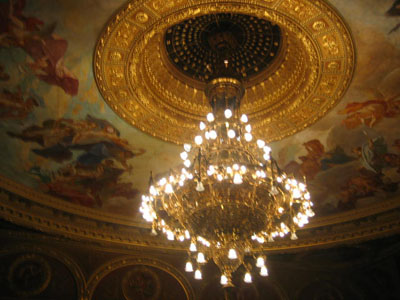 |
||
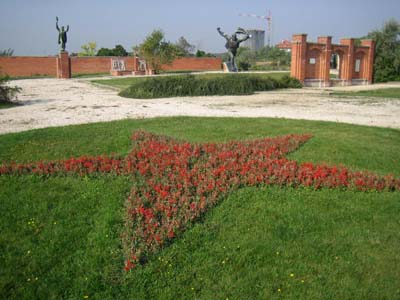 |
SZOBORPARK (Statue Park, in Buda); a park in the southwest corner of Budapest where all the statues and monuments from the 40 years of Communism in Hungary have been relegated. Rather than destroying evidence of this part of its history (Communism in Hungary fell in 1989), officials decided to move 42 monuments that once glorified Communism in Budapest to this corner of the city (an out of the way plot of land with dirt roads and unkept fields all around). Relocated here were statues of Lenin, Stalin, Marx, and Engel as well as other statues that symbolized Communism. Although there was a lack of context amidst the grand statues gathered here, the sheer size of the monuments imparted an ominous feeling of dominance and conformity. I found it difficult to experience the significance of the monuments on the Magyar life; nonetheless, what these objects represented and their impact on Hungarian culture and history could not be ignored. Needless to say, this was very much worth the journey. There is a tourist bus that goes directly from the center of town to the park. But for more than half the price & twice the adventure, take the easy to navigate public transport option (tram to bus depot, yellow bus to park). |
||
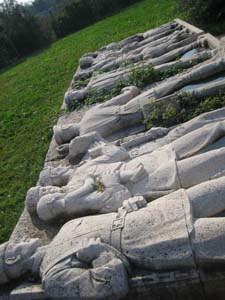 |
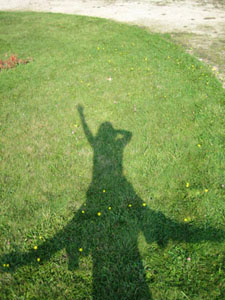 |
||
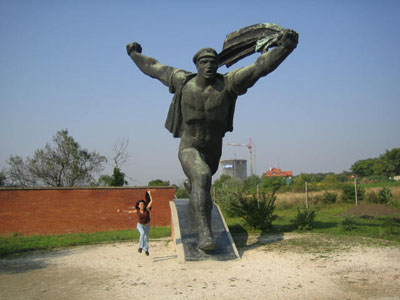 |
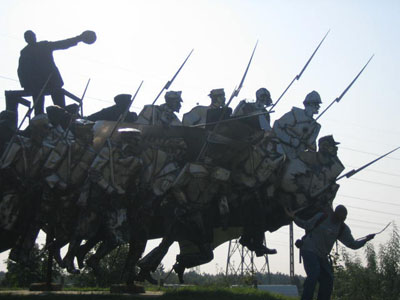 |
||
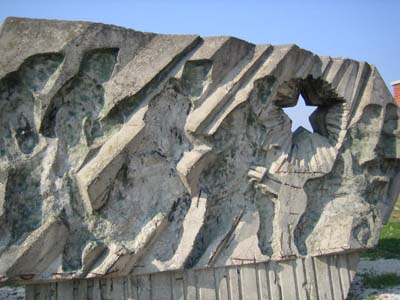 |
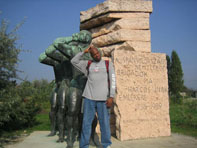 |
We had fun posing with the statues. Can you find us? | |
 |
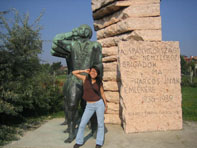 |
||
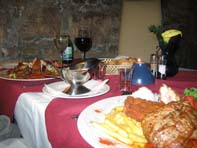 |
Traditional dancing done by a troupe of teens. They were quite good. And they were accompanied by a trio of string musicians. The guitar & violin are familiar, but the one in the middle is a new one. The man uses a pair of sticks (like for a xylophone) & taps the strings to make such beautiful music. |
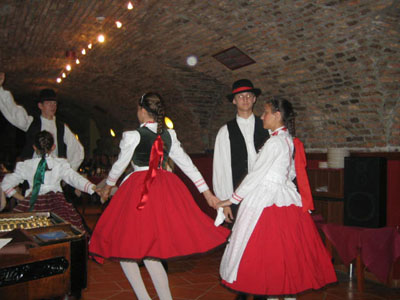 |
|
Check out our feast!!! We enjoyed a lovely dinner (in KÁLDY PINCE ÉTTEREM) with some traditional dancing and music. It was a bit touristy, but still much fun. |
|||
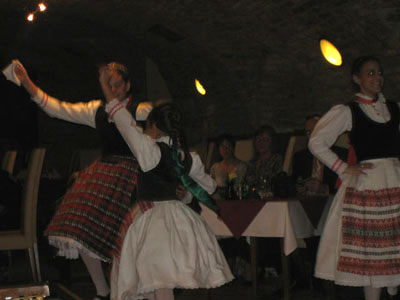 |
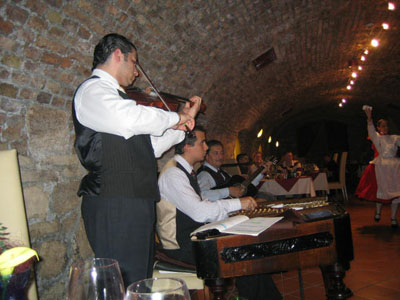 |
||
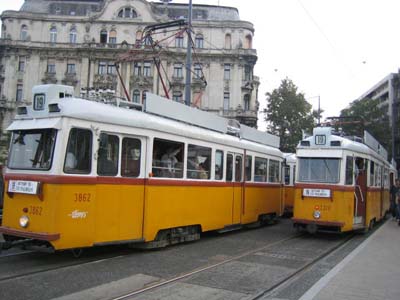 |
 |
We love trams! They are faster than buses and also above ground. What a combo! |
|
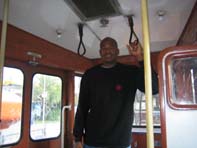 |
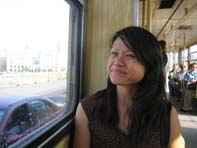 |
||
We decided that Europe is too small for Fred. Look carefully & notice, his feet are hanging off the end of the bed, & his head is just about scraping the ceiling of the tram. |
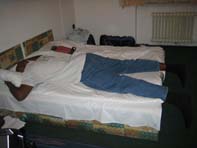 |
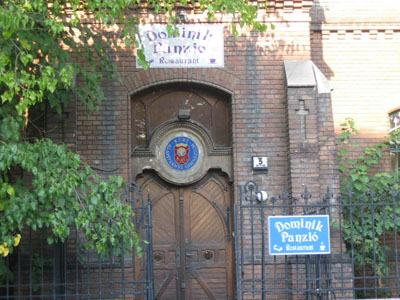 |
|
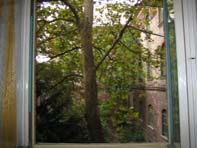 |
Our hostel, actually it's a pension. So you get a private room, but share the bathroom. It's cheaper than hotels, but a bit more than hostels. |
||